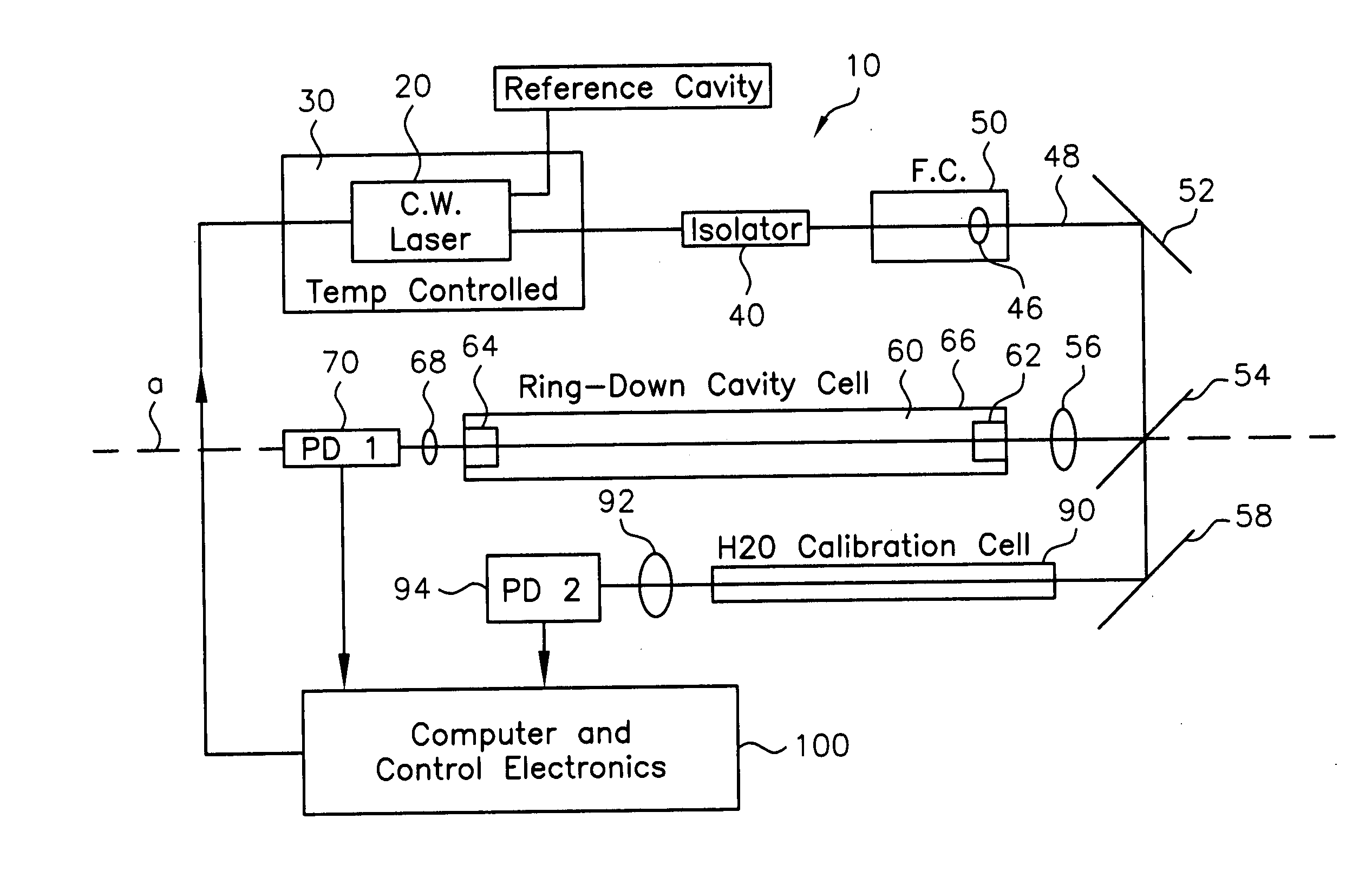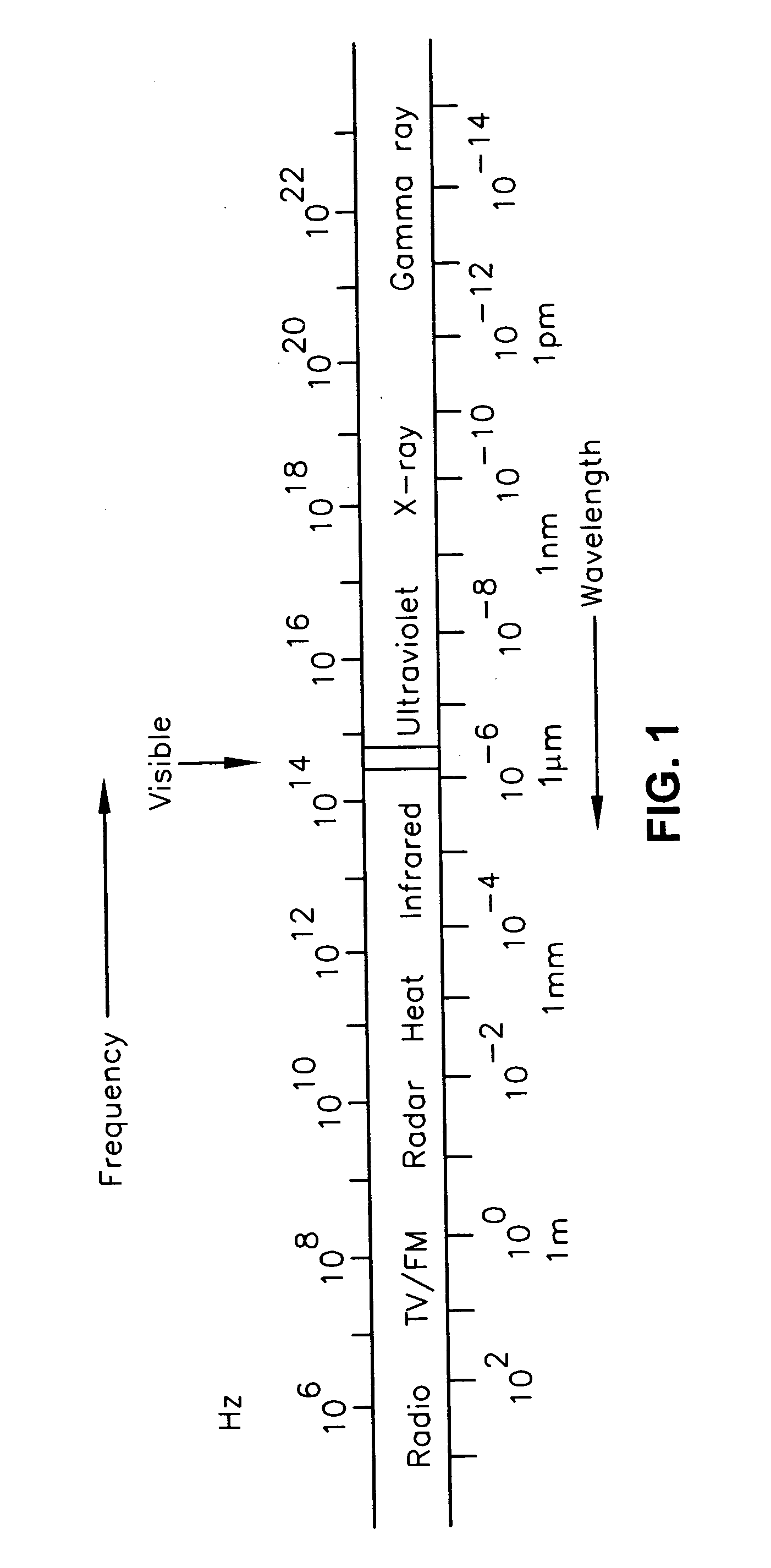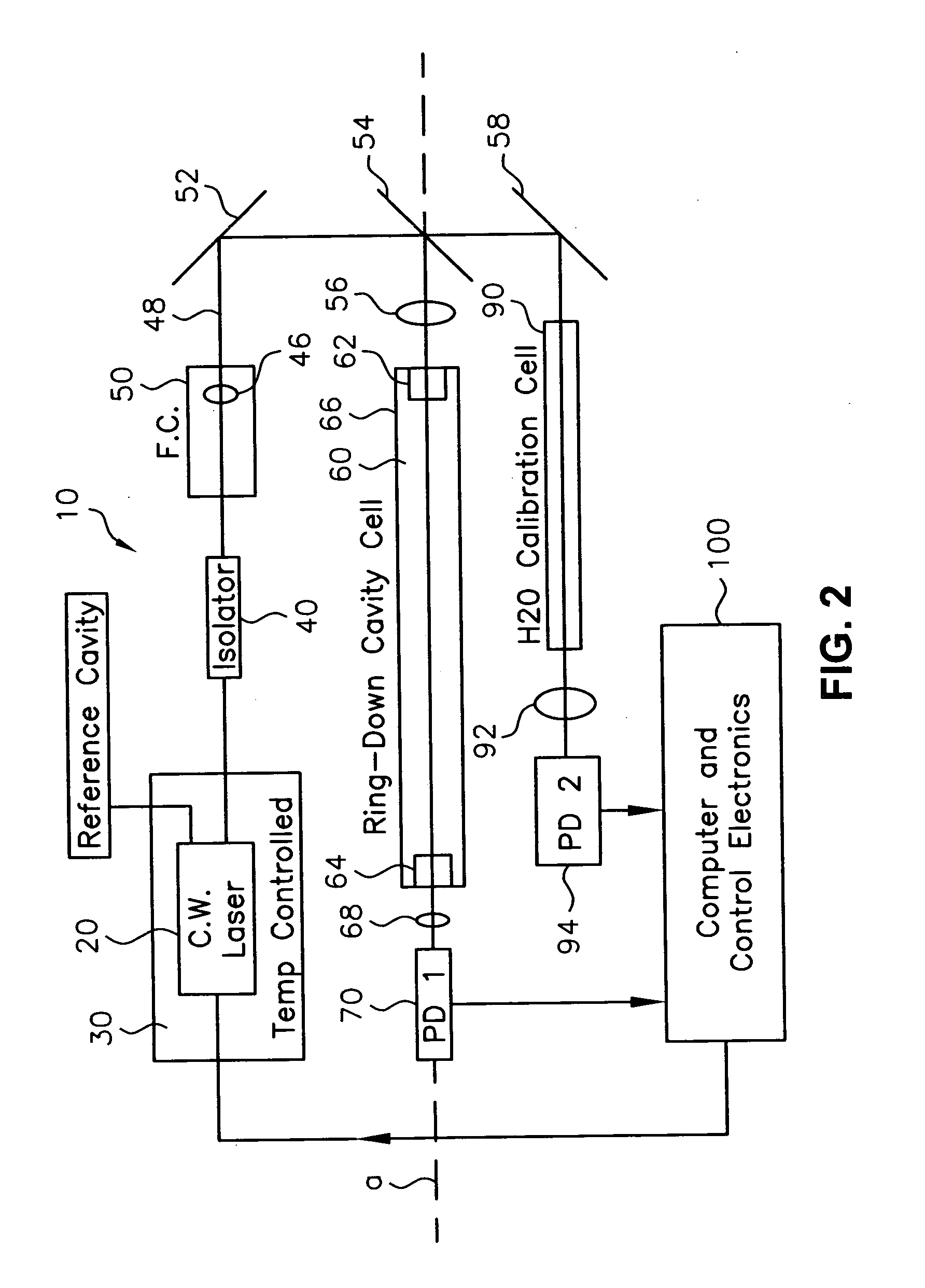Method for enhanced evanescent field exposure in an optical fiber resonator for spectroscopic detection and measurement of trace species
- Summary
- Abstract
- Description
- Claims
- Application Information
AI Technical Summary
Benefits of technology
Problems solved by technology
Method used
Image
Examples
Embodiment Construction
[0050] The entire disclosure of U.S. patent application Ser. No. 10 / 017,367 filed Dec. 12, 2001 is expressly incorporated herein by reference.
[0051]FIG. 4 illustrates fiber optic based ring-down apparatus 400 according to a first exemplary embodiment of the present invention through which trace species, or analytes, in gases and liquids may be detected. In FIG. 4, apparatus 400 includes resonant fiber optic ring 408 which has fiber optic cable 402 and sensors 500 (described below in detail) distributed along the length of fiber optic cable 402. The length of resonant fiber optic ring 408 is easily adaptable to a variety of acquisition situations, such as perimeter sensing or passing through various sections of a physical plant, for example. Although as shown, sensors 500 are distributed along the length of fiber optic loop 408, the invention may be practiced using only one sensor 500, if desired. The distribution of more than one sensor 500 allows for sampling of a trace species at...
PUM
 Login to View More
Login to View More Abstract
Description
Claims
Application Information
 Login to View More
Login to View More - R&D
- Intellectual Property
- Life Sciences
- Materials
- Tech Scout
- Unparalleled Data Quality
- Higher Quality Content
- 60% Fewer Hallucinations
Browse by: Latest US Patents, China's latest patents, Technical Efficacy Thesaurus, Application Domain, Technology Topic, Popular Technical Reports.
© 2025 PatSnap. All rights reserved.Legal|Privacy policy|Modern Slavery Act Transparency Statement|Sitemap|About US| Contact US: help@patsnap.com



